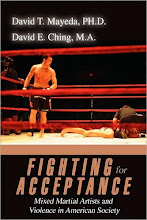 Globalization occurs on many fronts. In our global society, there are related economic and militaristic arrangements, both of which benefit high-income imperialist countries more than they do those in the developing stage. Additionally, international economic and militaristic arrangements affect climate change and cultural interchange. Again, in this system, those countries that spread their systems profit disproportionately in the global matrix.
Globalization occurs on many fronts. In our global society, there are related economic and militaristic arrangements, both of which benefit high-income imperialist countries more than they do those in the developing stage. Additionally, international economic and militaristic arrangements affect climate change and cultural interchange. Again, in this system, those countries that spread their systems profit disproportionately in the global matrix.As has been noted across the news, Manila (capital city of the Philippines) and its greater metropolitan area has recently been struck by typhoon Ondoy, resulting in mass flooding and thus far, 141 deaths/37 missing. Unfortunately, the rippling effects of this disaster will be all the more devastating for the country. From a financial standpoint, early estimates show that the flooding will cost the Philippines colossal amounts in repair of infrastructure and insurance claims.
Perhaps worse, the flooding will have lasting effects in terms of hospital costs and impending disease, in particular for those families who live(d) in shanty town-type housing that is highly prevalent across Manila’s greater metropolitan area. Due to typhoon Ondoy, the number of internally displaced persons (IDPs) in the Philippines has likely increased in the hundreds of thousands, and undoubtedly, poorer families will be more susceptible to disease due to a lack of health insurance and generally poorer health.
Climate Change and Economic Imbalances
While it is impossible to know if typhoon Ondoy is a direct result of climate change or not, IRIN reported in July of this year that the Philippines was one of the top 12 countries in the world at greatest risk of environmental disaster coming at the hands of climate change (specifically storms):
The World Bank has made a list of the five main threats arising from climate change: droughts, floods, storms, rising sea levels, and greater uncertainty in agriculture. Four of the world's poorest nations top the list of the 12 countries at the highest risk.
[…]
The Philippines, a middle-income country in Southeast Asia consisting of over 7,000 islands, leads the list of nations most in danger of facing frequent and more intense storms. In 2008 it was one of three countries hit by the most disasters, according to the Brussels-based Centre for Research on the Epidemiology of Disasters.
The above referenced report essentially called it here, noting further that climate change will affect the poorer countries of the world more so than those countries that are ultimately causing adverse environmental shifts.
The assumption that free trade and the development of industry in middle-income/developing countries benefits all of society relies on a capitalist ideology, which professes that accumulating more and more and more is a good thing. Incessant accumulation can best be accomplished by exploiting vulnerable populations, in particular those outside of one’s immediate locale; it is at this stage where the most money is made (lowering production costs).
However, once tangible products are available for sale, a second key for capitalists is to manufacture a cultural desire for those products that exceeds what the labor force can afford. Thus, the concept of credit becomes all the more important -- people from all socio-economic groups will defer to creditors to pay for material items now, but pay back creditors more later, or pay the eventual punitive consequences.
The real point here, however, is that high-income countries (e.g., Japan, United States, Germany) plant factories overseas to lower production costs, justified through the capitalist ideology that they are “helping” low-income countries industrialize, a so-called natural progression in society. But what if those countries do industrialize? Won’t they likewise want to then shift to a service/technology-based economy?
This means they will have to locate poorer countries where they can build factories and exploit new minority workers. It will be a never ending disastrous cycle of human and environmental exploitation … never ending that is, until there is no one and no place left to exploit. But that wouldn’t change the capitalist ideology; it would just mean new forms of exploitation must be created.
More to this end, the Philippines exemplifies a classic example of manufactured international dependence in our capitalist world. As I blogged about previously, international industries rely heavily on Filipino/a contract laborers who remit enormous amounts of money back home annually. This system is applauded by some key governmental officials. But in reality, the system fosters dependence, a lack of internal motivation/innovation, and family breakup.
Militaristic Paternalism
Additionally, the United States maintains a system of militaristic governance in the Philippines, currently defended through the ideological fear of terrorism. A history of colonial policies and practices has intensified the marginalization of Muslims in the Philippines’ southern region of Mindanao. Marginalization of course cultivates extremism (based on both religious fundamentalism and/or poverty). From a September 25, 2009 New York Times article:
Last month, after consulting with the Philippine government, the United States decided to extend the operation of its force in the southern Philippines, known as the Joint Special Operations Task Force-Philippines and composed of 600 elite counterinsurgency soldiers. The announcement drew angry responses from left-leaning politicians and news media; American officials declined to be interviewed for this article.
Since establishing the task force in 2002, the United States has provided the Philippines with $1.6 billion in military and economic aid. Much of that, including $400 million from the United States Agency for International Development, has been funneled into Mindanao in the southern Philippines, where Abu Sayyaf and another Muslim separatist group operate.
[…]
The Americans have also been directing development assistance here, including building roads, bridges and buildings; improving cellphone service and encouraging local businesses; training teachers and wiring schools for the Internet; and providing temporary medical and dental clinics.
However, the sentiments concerning U.S. military intervention and presence are not all positive, nor should they be based on America’s militaristic history in the Philippines. More from this same NY Times article:
“Peace here in Basilan is so elusive,” Mr. Furigay said, adding that poor governance created an environment in which groups like Abu Sayyaf grew. “Most of our leaders in Basilan are not really sincere. Most of them are holding their positions just to enrich themselves.” He said that because Abu Sayyaf’s leadership had been decimated, the group’s members were now motivated by “grievances.”
“There’s little ideology,” he said, estimating that Abu Sayyaf’s core members numbered fewer than 20 in Basilan.
That assessment was shared by other islanders, including those less welcoming of an American presence. Al-Rasheed M. Sakkalahul, Basilan’s vice governor, estimated that only 10 were longtime, ideologically driven members. But he said they were able to mobilize about 100 supporters in a conflict.
“All the rest are ordinary bandits, even civilians without any training on how to handle firearms,” Mr. Sakkalahul, 52, said at his office in Isabela. “They join Abu Sayyaf so they can divide ransom money from kidnapping victims.” He said that given those circumstances, he was skeptical of the American force’s presence here and complained that he had not been given facts about the mission. “You are my visitor in my house,” Mr. Sakkalahul said. “You just enter my house without even knocking on my door. What is your purpose in coming?”
Perhaps America’s real interest in maintaining military operations in the Philippines and other developing countries lays in a more clandestine industry that mixes private capital with international militaristic objectives. See below:
As can be seen, contemporary imperialism manifests in multiple forms, relying on governmental complicity/corruption from numerous countries, public fear, and capitalist ideology. The results of this complex web are likewise multiple, exhibited through economic dependence/exploitation, deference to external military operations, and an increased potential for natural disasters.
(Photo courtesy of Reuters).









nice nice. the connection of different components of society.
ReplyDeletecheap valentino uk, combining elegant style and cutting-edge technology, a variety of styles of cheap valentino t shirts polos, the pointer walks between your exclusive taste style.
ReplyDelete